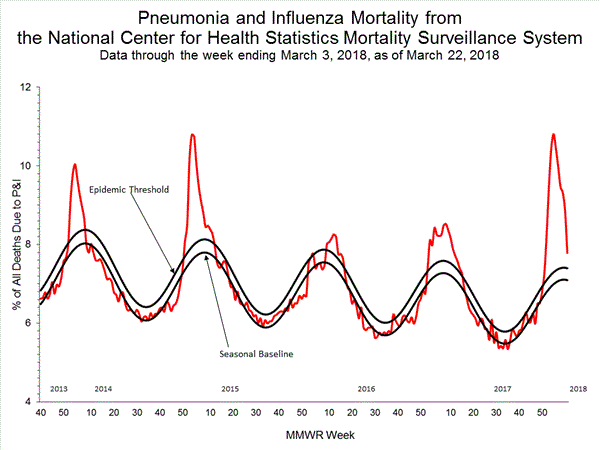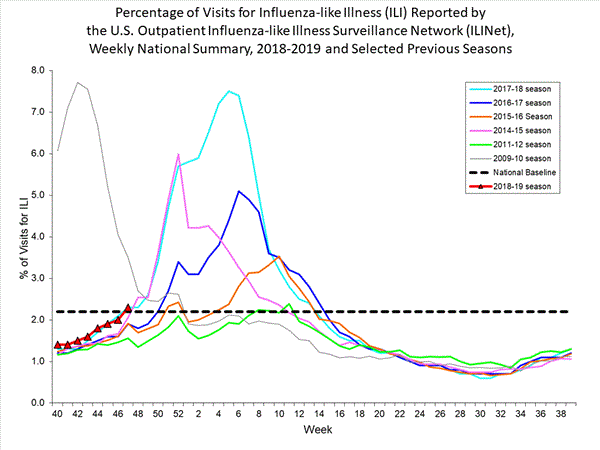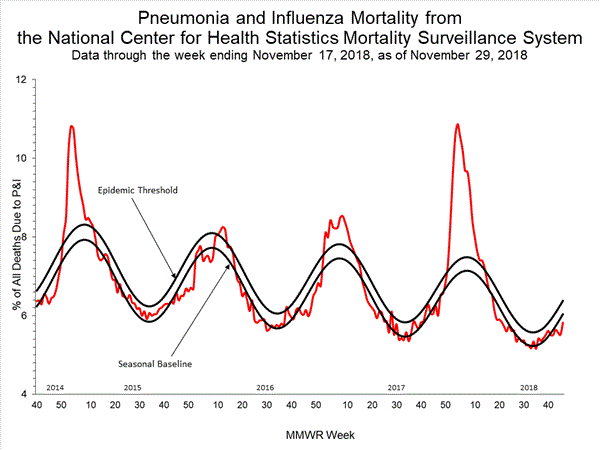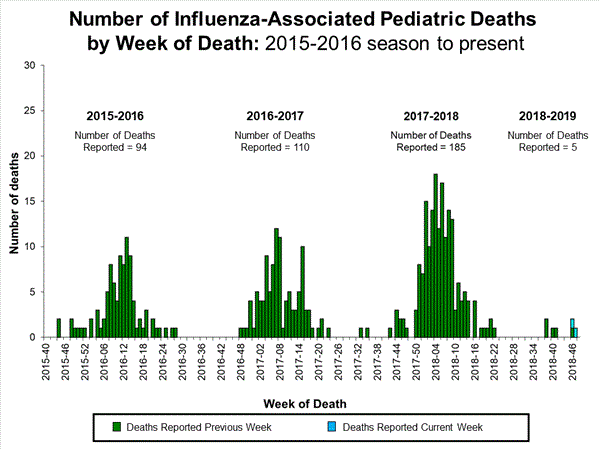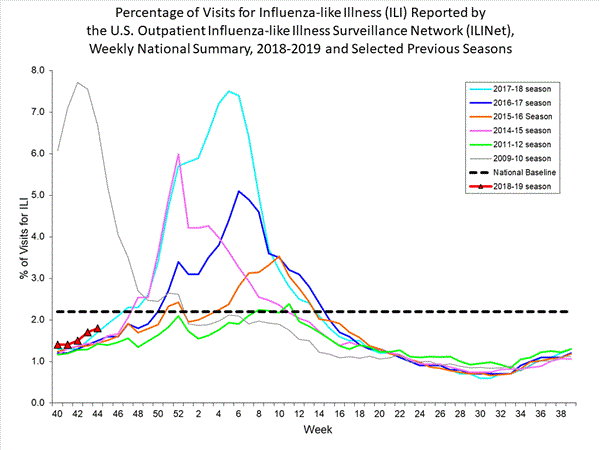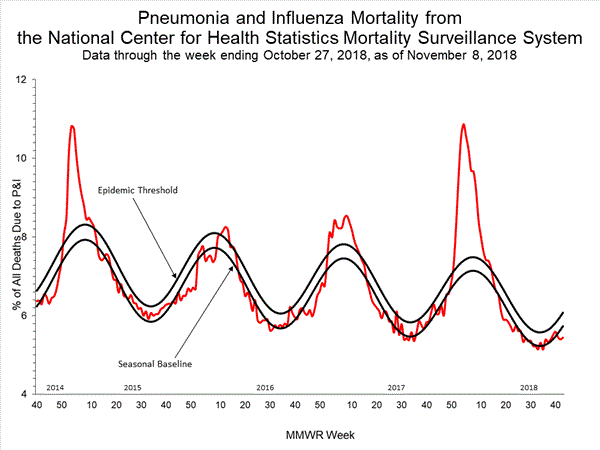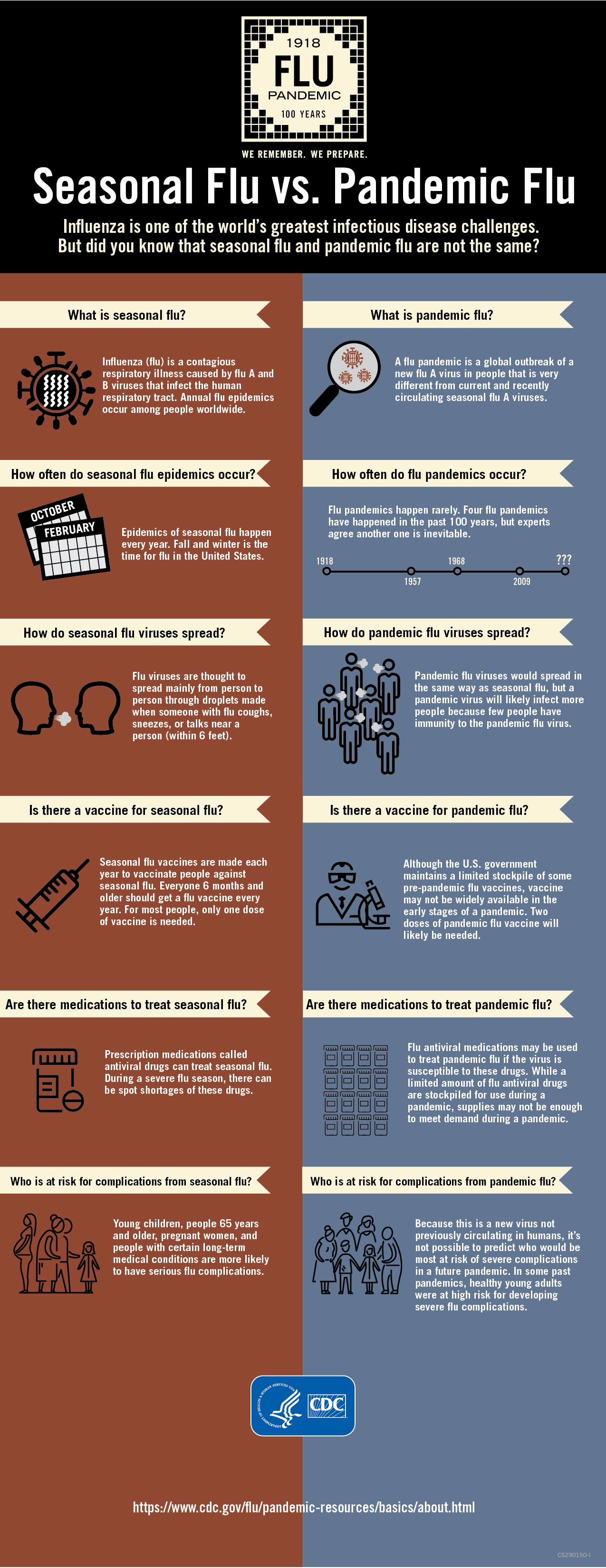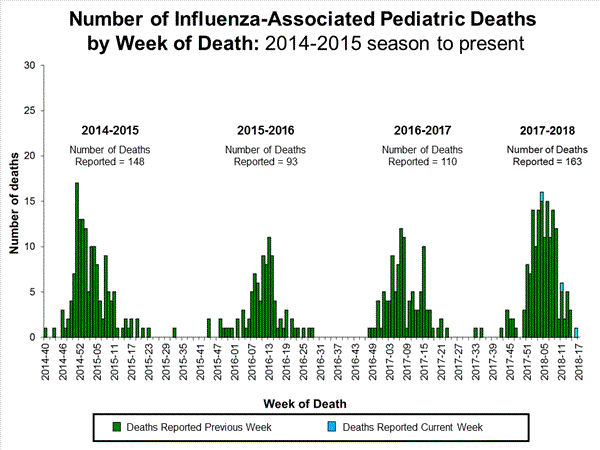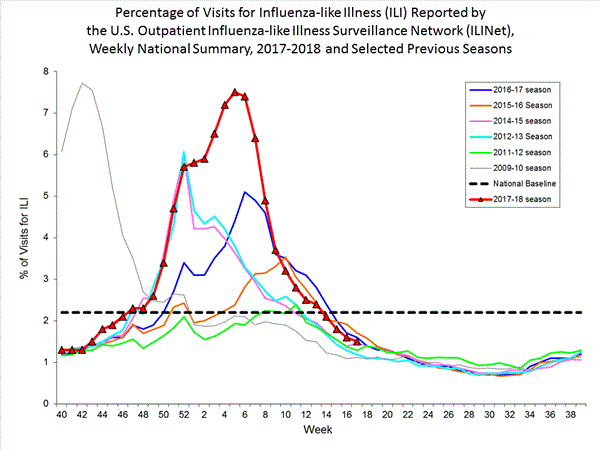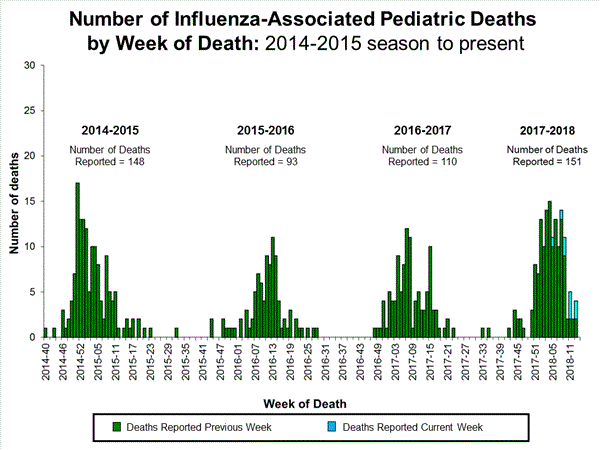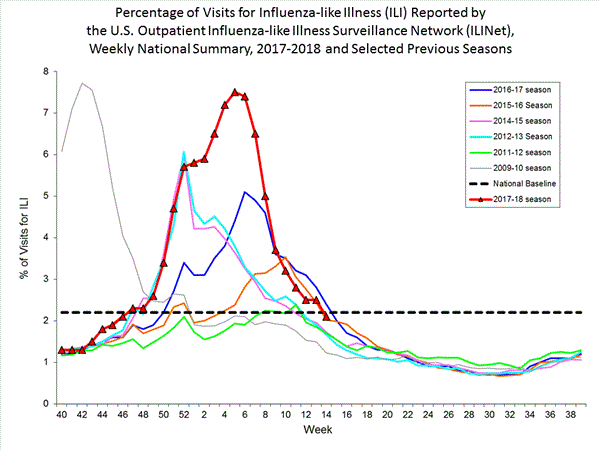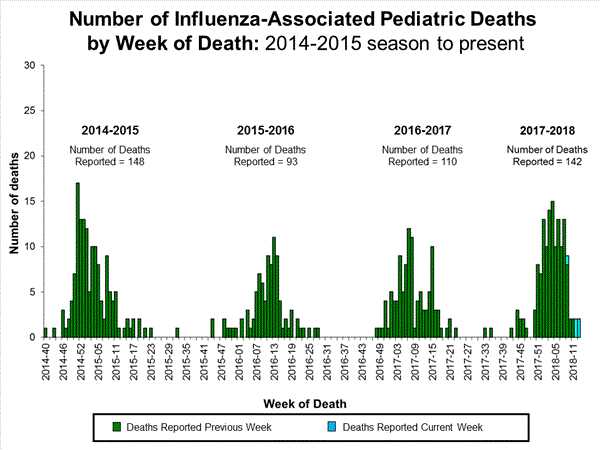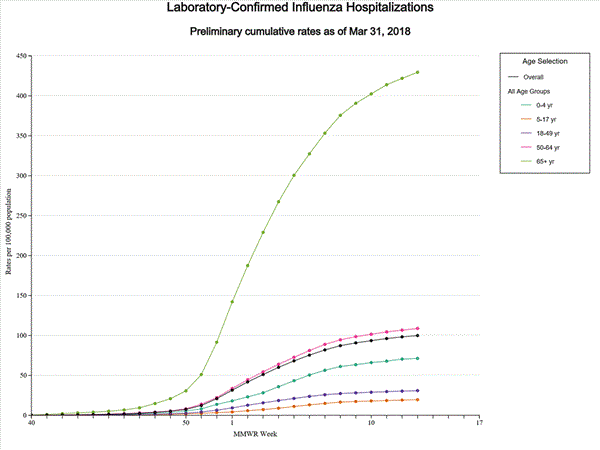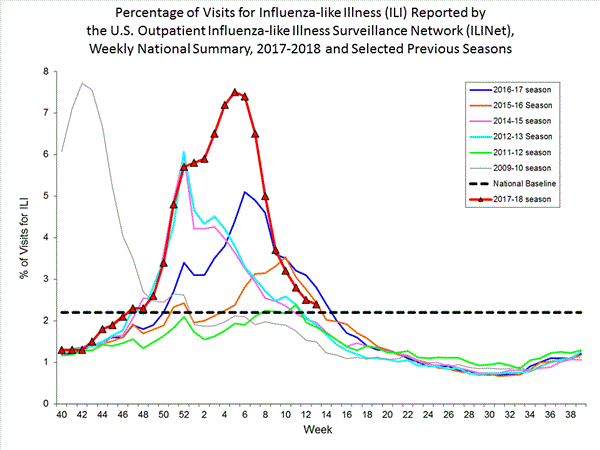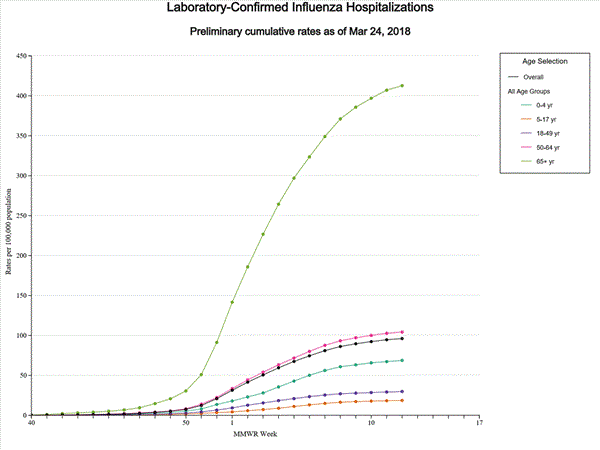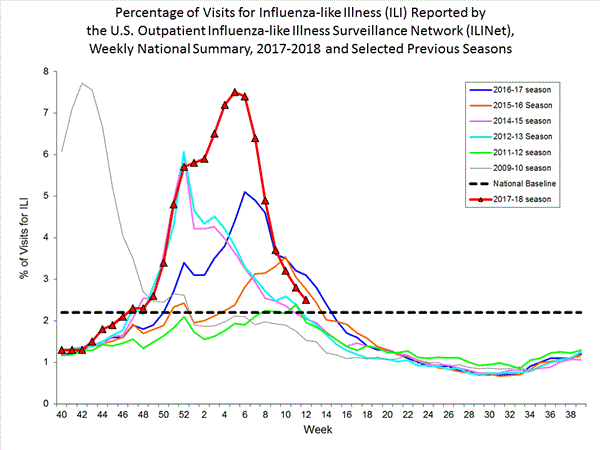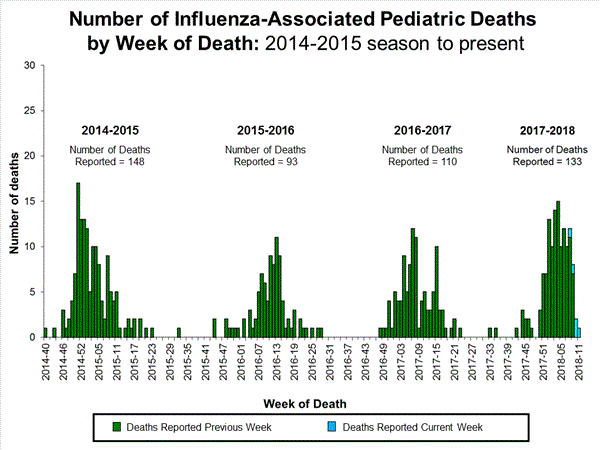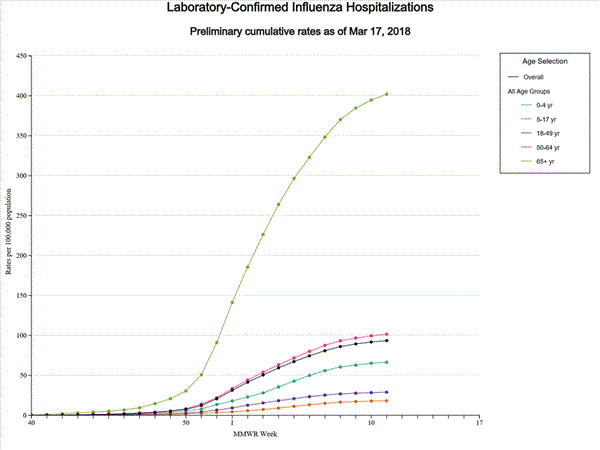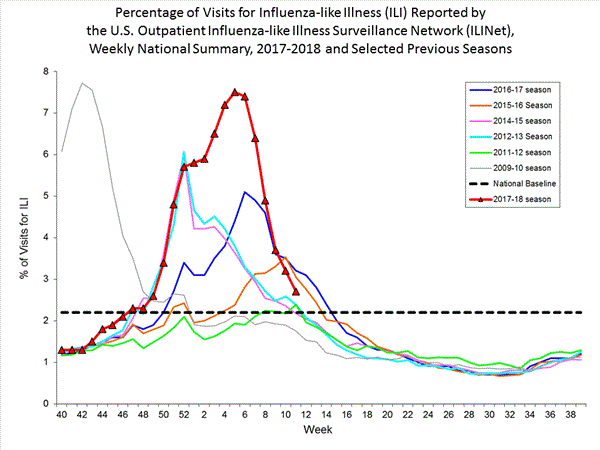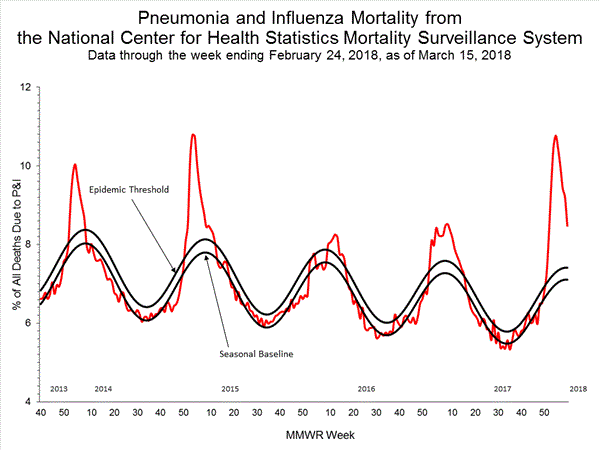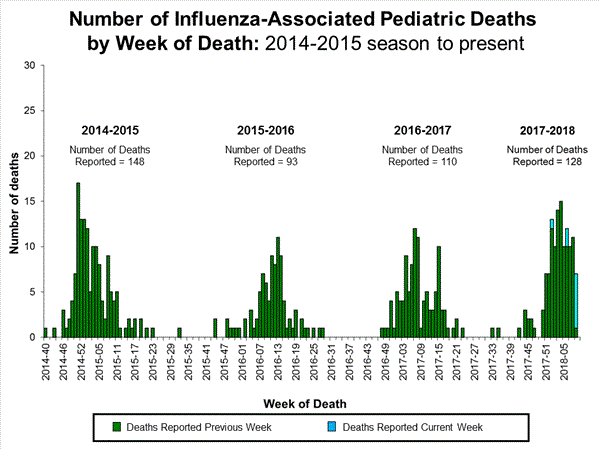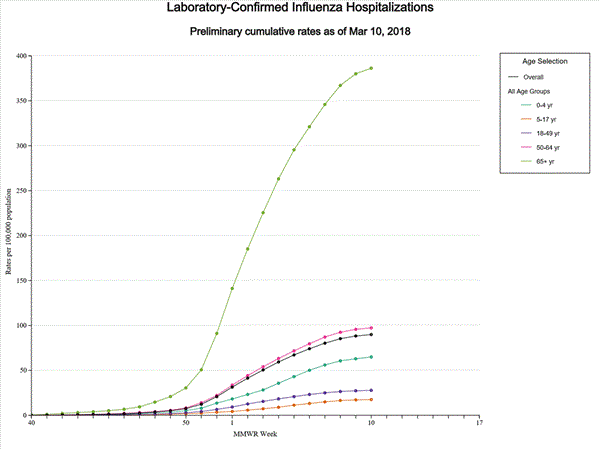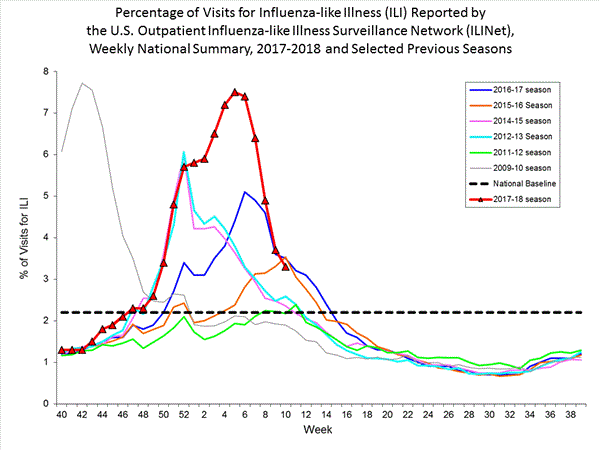Archive for the ‘Influenza’ Category
Ultraviolet germicidal irradiation of influenza-contaminated N95 filtering facepiece respirators
Tuesday, July 31st, 2018Ultraviolet germicidal irradiation of influenza-contaminated N95 filtering facepiece respirators
Mills, Devin et al.
American Journal of Infection Control
“Background
Safe and effective decontamination and reuse of N95 filtering facepiece respirators (FFRs) has the potential to significantly extend FFR holdings, mitigating a potential shortage due to an influenza pandemic or other pandemic events. Ultraviolet germicidal irradiation (UVGI) has been shown to be effective for decontaminating influenza-contaminated FFRs. This study aims to build on past research by evaluating the UVGI decontamination efficiency of influenza-contaminated FFRs in the presence of soiling agents using an optimized UVGI dose.
Methods
Twelve samples each of 15 N95 FFR models were contaminated with H1N1 influenza (facepiece and strap), then covered with a soiling agent—artificial saliva or artificial skin oil. For each soiling agent, 3 contaminated FFRs were treated with 1 J/cm2 UVGI for approximately 1 minute, whereas 3 other contaminated FFRs remained untreated. All contaminated surfaces were cut out and virus extracted. Viable influenza was quantified using a median tissue culture infectious dose assay.
Results
Significant reductions (≥3 log) in influenza viability for both soiling conditions were observed on facepieces from 12 of 15 FFR models and straps from 7 of 15 FFR models.
Conclusions
These data suggest that FFR decontamination and reuse using UVGI can be effective. Implementation of a UVGI method will require careful consideration of FFR model, material type, and design.”
CDC: During week 17 (April 22-28, 2018), influenza activity decreased in the United States.
Sunday, May 6th, 2018
- Viral Surveillance:Overall, influenza A(H3) viruses have predominated this season. Since early March, influenza B viruses have been more frequently reported than influenza A viruses. The percentage of respiratory specimens testing positive for influenza in clinical laboratories decreased.
- Pneumonia and Influenza Mortality: The proportion of deaths attributed to pneumonia and influenza (P&I) was below the system-specific epidemic threshold in the National Center for Health Statistics (NCHS) Mortality Surveillance System.
- Influenza-associated Pediatric Deaths: Three influenza-associated pediatric deaths were reported.
- Influenza-associated Hospitalizations: A cumulative rate of 106.0 laboratory-confirmed influenza-associated hospitalizations per 100,000 population was reported.
- Outpatient Illness Surveillance: The proportion of outpatient visits for influenza-like illness (ILI) was 1.5%, which is below the national baseline of 2.2%. One of 10 regions reported ILI at or above their region-specific baseline level. Two states experienced low ILI activity; and New York City, the District of Columbia, Puerto Rico, and 48 states experienced minimal ILI activity.
- Geographic Spread of Influenza: The geographic spread of influenza in three states was reported as widespread; Guam, Puerto Rico and seven states reported regional activity; 24 states reported local activity; the District of Columbia, and 14 states reported sporadic activity; and the U.S. Virgin Islands and two states reported no influenza activity.
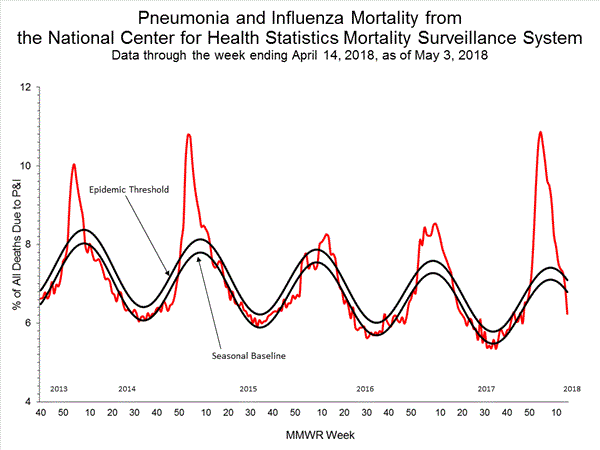
2017-2018 Influenza Season Week 14 ending April 7, 2018
Saturday, April 14th, 2018Synopsis:
During week 14 (April 1-7, 2018), influenza activity decreased in the United States.
- Viral Surveillance: Overall, influenza A(H3) viruses have predominated this season. Since early March, influenza B viruses have been more frequently reported than influenza A viruses. The percentage of respiratory specimens testing positive for influenza in clinical laboratories decreased.
- Pneumonia and Influenza Mortality: The proportion of deaths attributed to pneumonia and influenza (P&I) was below the system-specific epidemic threshold in the National Center for Health Statistics (NCHS) Mortality Surveillance System.
- Influenza-associated Pediatric Deaths: Nine influenza-associated pediatric deaths were reported.
- Influenza-associated Hospitalizations: A cumulative rate of 101.6 laboratory-confirmed influenza-associated hospitalizations per 100,000 population was reported.
- Outpatient Illness Surveillance: The proportion of outpatient visits for influenza-like illness (ILI) was 2.1%, which is below the national baseline of 2.2%. Six of 10 regions reported ILI at or above region-specific baseline levels. Two states experienced high ILI activity; two states experienced moderate ILI activity; 11 states experienced low ILI activity; and New York City, the District of Columbia, Puerto Rico, and 35 states experienced minimal ILI activity.
- Geographic Spread of Influenza: The geographic spread of influenza in seven states was reported as widespread; Guam, Puerto Rico and 22 states reported regional activity; the District of Columbia and 16 states reported local activity; and the U.S. Virgin Islands and five states reported sporadic activity.
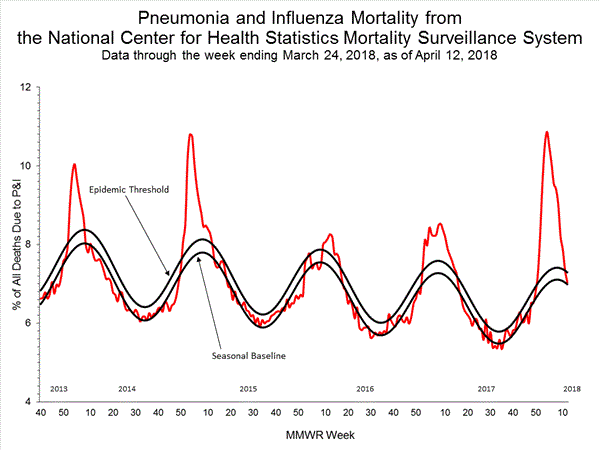
CDC: During week 13 (March 25-31, 2018), influenza activity decreased in the United States.
Monday, April 9th, 2018Synopsis:
- Viral Surveillance: Overall, influenza A(H3) viruses have predominated this season. Since early March, influenza B viruses have been more frequently reported than influenza A viruses. The percentage of respiratory specimens testing positive for influenza in clinical laboratories remains elevated.
- Pneumonia and Influenza Mortality: The proportion of deaths attributed to pneumonia and influenza (P&I) was below the system-specific epidemic threshold in the National Center for Health Statistics (NCHS) Mortality Surveillance System.
- Influenza-associated Pediatric Deaths: Five influenza-associated pediatric deaths were reported.
- Influenza-associated Hospitalizations: A cumulative rate of 99.9 laboratory-confirmed influenza-associated hospitalizations per 100,000 population was reported.
- Outpatient Illness Surveillance: The proportion of outpatient visits for influenza-like illness (ILI) was 2.4%, which is above the national baseline of 2.2%. Seven of 10 regions reported ILI at or above region-specific baseline levels. Two states experienced high ILI activity; eight states experienced moderate ILI activity; New York City and 12 states experienced low ILI activity; and the District of Columbia, Puerto Rico, and 28 states experienced minimal ILI activity.
- Geographic Spread of Influenza: The geographic spread of influenza in 11 states was reported as widespread; Guam, Puerto Rico and 26 states reported regional activity; the District of Columbia and 10 states reported local activity; and the U.S. Virgin Islands and three states reported sporadic activity.
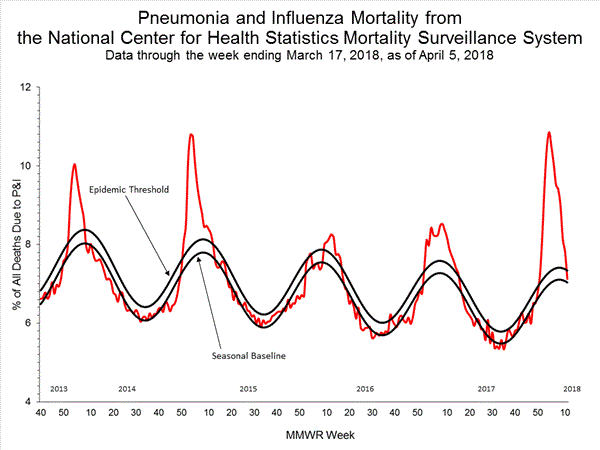
During week 12 (March 18-24, 2018), influenza activity decreased in the United States.
Sunday, April 1st, 2018During week 12 (March 18-24, 2018), influenza activity decreased in the United States.
- Viral Surveillance: Overall, influenza A(H3) viruses have predominated this season. However, in recent weeks the proportion of influenza A viruses has declined, and during week 12, influenza B viruses were more frequently reported than influenza A viruses. The percentage of respiratory specimens testing positive for influenza in clinical laboratories decreased.
- Pneumonia and Influenza Mortality: The proportion of deaths attributed to pneumonia and influenza (P&I) was above the system-specific epidemic threshold in the National Center for Health Statistics (NCHS) Mortality Surveillance System.
- Influenza-associated Pediatric Deaths: Four influenza-associated pediatric deaths were reported.
- Influenza-associated Hospitalizations: A cumulative rate of 96.1 laboratory-confirmed influenza-associated hospitalizations per 100,000 population was reported.
- Outpatient Illness Surveillance: The proportion of outpatient visits for influenza-like illness (ILI) was 2.5%, which is above the national baseline of 2.2%. Nine of 10 regions reported ILI at or above region-specific baseline levels. Four states experienced high ILI activity; eight states experienced moderate ILI activity; New York City, Puerto Rico, the District of Columbia, and 14 states experienced low ILI activity; and 24 states experienced minimal ILI activity.
- Geographic Spread of Influenza: The geographic spread of influenza in Puerto Rico and 16 states was reported as widespread; 22 states reported regional activity; the District of Columbia, Guam and eight states reported local activity; four states reported sporadic activity; and the U.S. Virgin Islands reported no influenza activity.
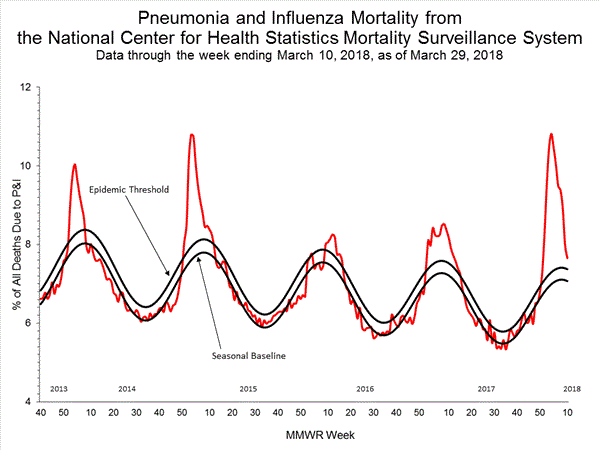
CDC: During week 11 (March 11-17, 2018), influenza activity decreased in the United States.
Sunday, March 25th, 2018During week 11 (March 11-17, 2018), influenza activity decreased in the United States.
- Viral Surveillance: Overall, influenza A(H3) viruses have predominated this season. However, in recent weeks the proportion of influenza A viruses has declined, and during week 11, influenza B viruses were more frequently reported than influenza A viruses. The percentage of respiratory specimens testing positive for influenza in clinical laboratories decreased.
- Pneumonia and Influenza Mortality: The proportion of deaths attributed to pneumonia and influenza (P&I) was above the system-specific epidemic threshold in the National Center for Health Statistics (NCHS) Mortality Surveillance System.
- Influenza-associated Pediatric Deaths: Five influenza-associated pediatric deaths were reported.
- Influenza-associated Hospitalizations: A cumulative rate of 93.5 laboratory-confirmed influenza-associated hospitalizations per 100,000 population was reported.
- Outpatient Illness Surveillance: The proportion of outpatient visits for influenza-like illness (ILI) was 2.7%, which is above the national baseline of 2.2%. Nine of 10 regions reported ILI at or above region-specific baseline levels. Six states experienced high ILI activity; nine states experienced moderate ILI activity; New York City, Puerto Rico, the District of Columbia, and 17 states experienced low ILI activity; and 18 states experienced minimal ILI activity.
- Geographic Spread of Influenza: The geographic spread of influenza in 17 states was reported as widespread; Guam, Puerto Rico and 26 states reported regional activity; the District of Columbia and five states reported local activity; and the U.S. Virgin Islands and two states reported sporadic activity.
